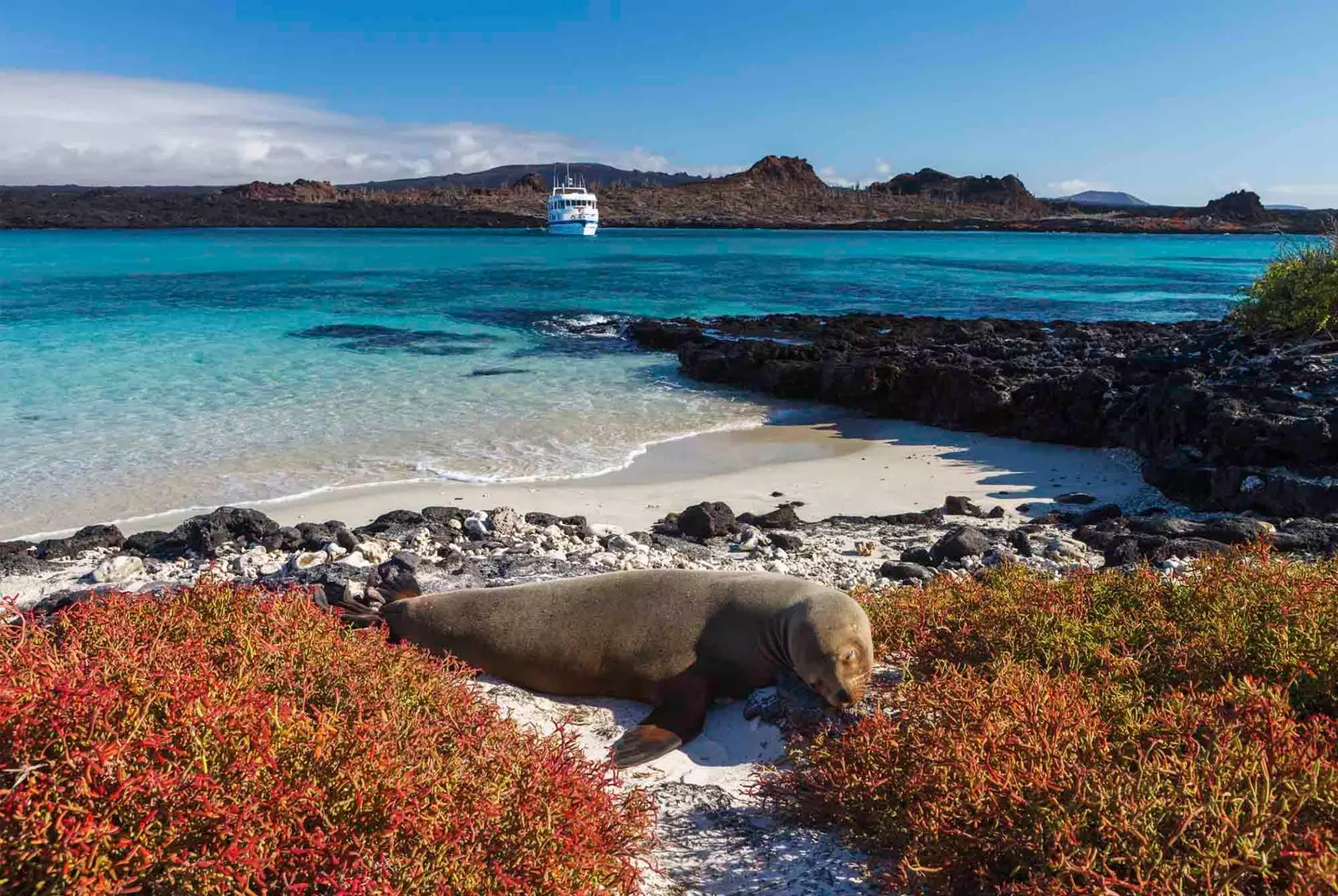
The sea lion awaits us on the island
The molten rock saw fit to emerge at the navel of the world five million years ago. Tectonic probability made this point in the middle of the Pacific one of only two archipelagos with islands in both hemispheres. And you can see that he liked it, because this enclave is one of the busiest in terms of volcanic activity.
The result has been a unique biodiversity paradise fruit of isolation and the passage of generations. The natural wonders that inspired Darwin's Theory of Evolution today attract 200,000 tourists a year to islands with a population of about 30,000. It is not for less. Even UNESCO, in 1987, recognized its immeasurable value as World Heritage.
Over time, the fire moved west, leaving behind a rosary of islands and islets at the mercy of the erosion of the elements. The easternmost rocky promontories of the archipelago patiently wait to disappear under the same waters that saw them emerge a few yesterdays ago.
97% of the islands are national park, so they can only be visited with official guides. Bearing this in mind, and since the east of the Galapagos concentrates more fauna than people, to set foot on its oldest and most uninhabited islands, the best option —if not the only one— is to get on board a boat. We weigh anchors to begin the darwinian cruiser.
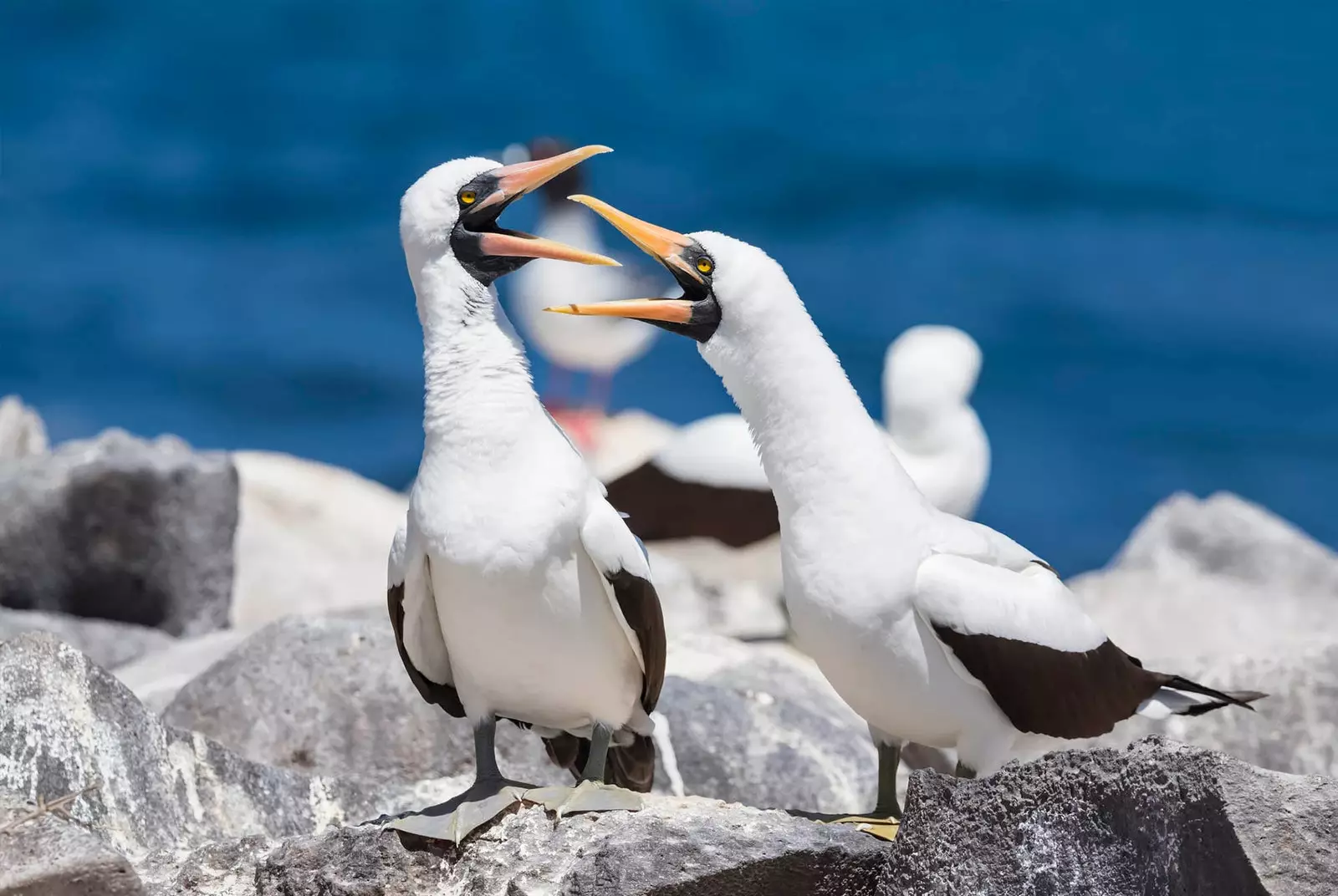
Two Nazca gannets, another of the species that inhabit the island
THE COASTAL TWINS
Baltra Island serves as a point of contact with the world. The plain of this enclave is responsible for receiving most of the tourists arriving from continental Ecuador. Different bus lines regularly connect the airport with the piers from where the boats leave for the rest of the archipelago.
We set sail in the pint from Baltra heading to south square, one of the two twin islets near the coast of the Island Santa Cruz . The reddish tones of the Galapagos lantana carpet the rocky and arid soils of this coastal mound. At first, it would seem that the only company for these endemic plants are the robust cacti that break the line of the horizon.
Nothing further. In this archipelago, land is a precious commodity. It is not necessary —and it is not allowed— to leave the path that follows the coast to cross paths with the Galapagos land iguanas, endemic to the archipelago and yellow and bluish in color. Despite their mythological monster appearance, these amiable multi-colored dragons in eternal table setting do not get the genius when a sea lion He walks over them on his way to the best rock for sunbathing.
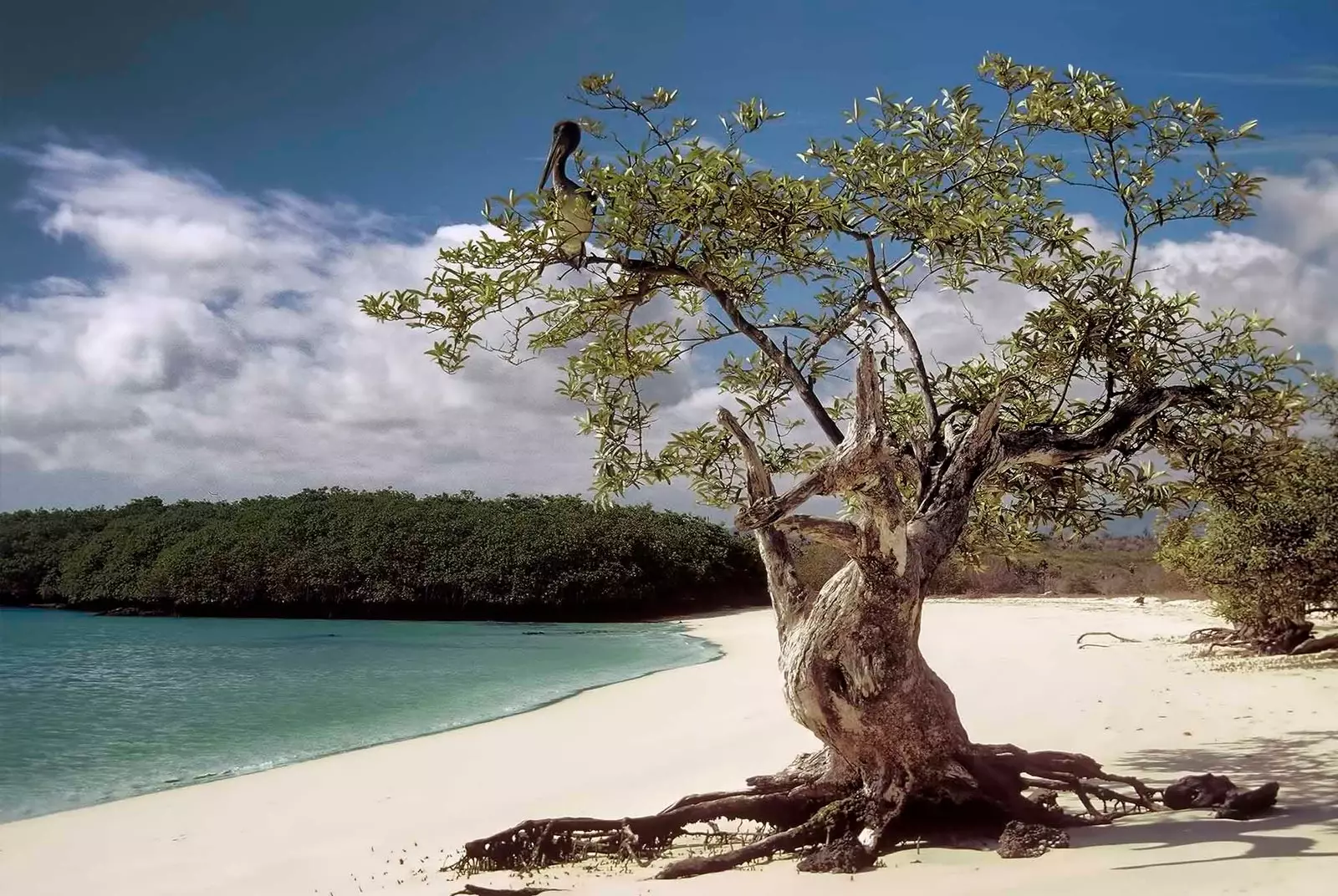
A pelican on the island of Santa Cruz
LIVING CLIFFS
The picture of sea lions enjoying the solar radiation surrounded by iguanas is repeated at the next stop. The cruise the pint , of modest dimensions, casts anchor on the shores of the Santa Fe Island . A couple of boats are responsible for taking tourists eager for fauna and flora to the mainland. In the small cliffs that delimit this ancient piece of land, the marine world and the terrestrial world come together in perfect harmony.
The morning adventure begins with a walk along the rocky shoreline. The stars of this island are the Santa Fe Land Iguanas, cousins of the previous ones but larger, paler shades and longer dorsal spines. In addition to this peculiar inhabitant, in Santa Fe there are marine iguanas and hybrid specimens that result from love affairs between the marine and terrestrial versions of these reptiles.
The coexistence between the aquatic world and the terrestrial world goes beyond iguanas. In the waters of one of the few shallow bays on the island you can find green turtles, rays and countless tropical fish in a kind of Finding Nemo in a Galapagos version. This place, ideal for snorkeling So is it for sea lion nurseries. Before heading back to the boat, there is always time to gawk at these pups rolling around in the sand or chasing the snaky tails of the marine iguanas.
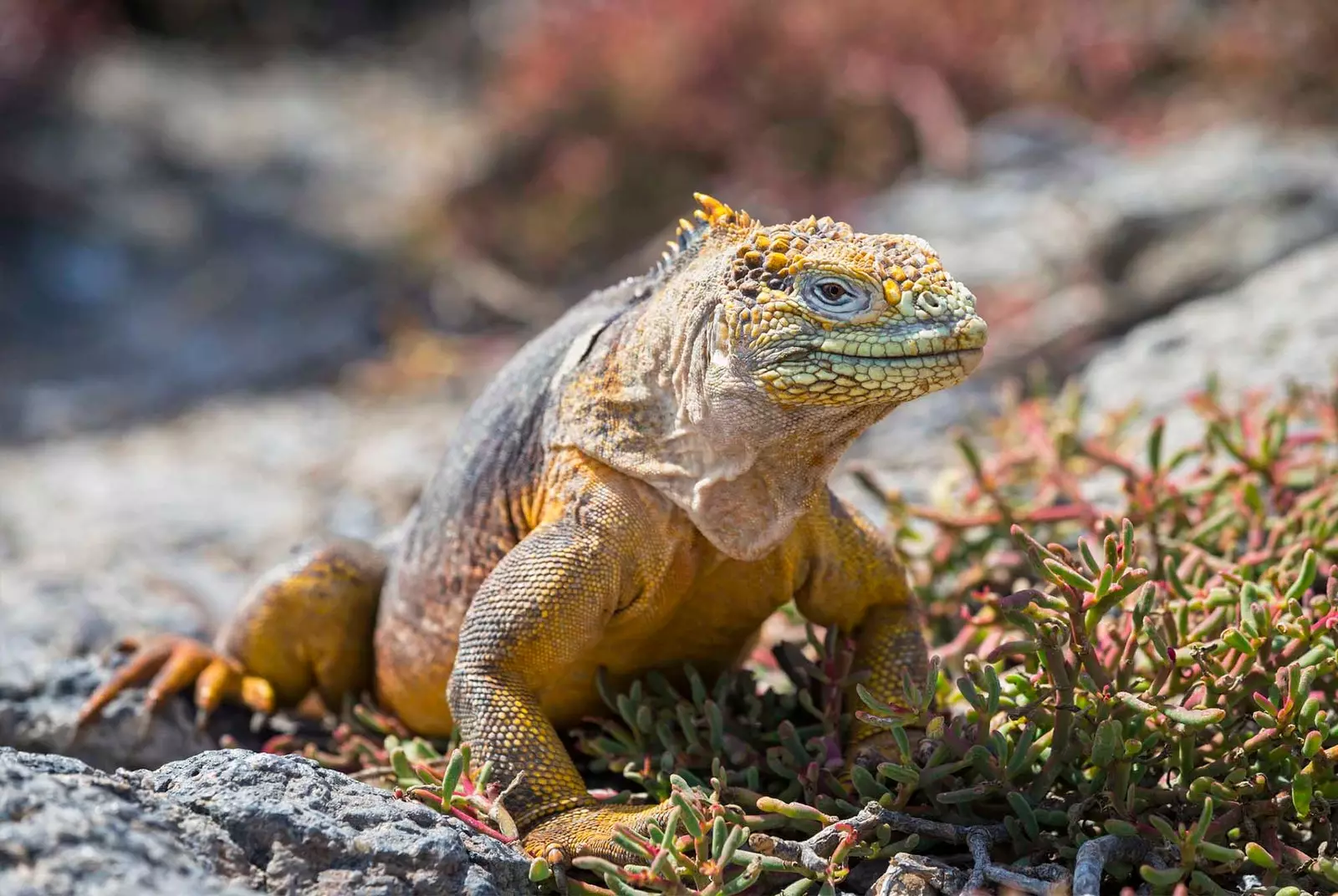
The Santa Fe land iguana
VOLCANIC WALK
In the middle of the oceanic immensity, the harshness of the elements spares no one. The winds and the saltpeter show the age of some islands condemned to disappear in the east and to be reborn in the extreme west of the archipelago. In the extreme southeast of Galapagos rests Española, the second oldest island in the group and probably the most enigmatic.
Being larger than the previous two, there is an opportunity to walk inside the island. A trail connects the coast with the volcanic remains in the heart of the island. The slopes of reddish tones, more typical of Martian landscapes, are home to an infinity of colonies of gulls and blue- and red-finned boobies more than accustomed to visits.
Due to the isolation and little contact with our species, the Galapagos fauna ignores the human presence. This makes the walk around the island a live nature documentary. The trail continues to one end of the island, Suarez Point. This rocky confine is the place chosen by hundreds of ear-tailed gulls, frigate birds and the king of the web-footed birds, the albatrosses.
No one doubts that the feathered neighbors of Punta Suarez they are a great attraction for the cameras. However, the photo that everyone is looking for is the one of the seawater rising to the sky through the cavities carved by time in the volcanic rock . Few scenes summarize the constant struggle of the elements in Galapagos like this one. A lost battle for Española, but one that will continue to be fought by the islands that come after.
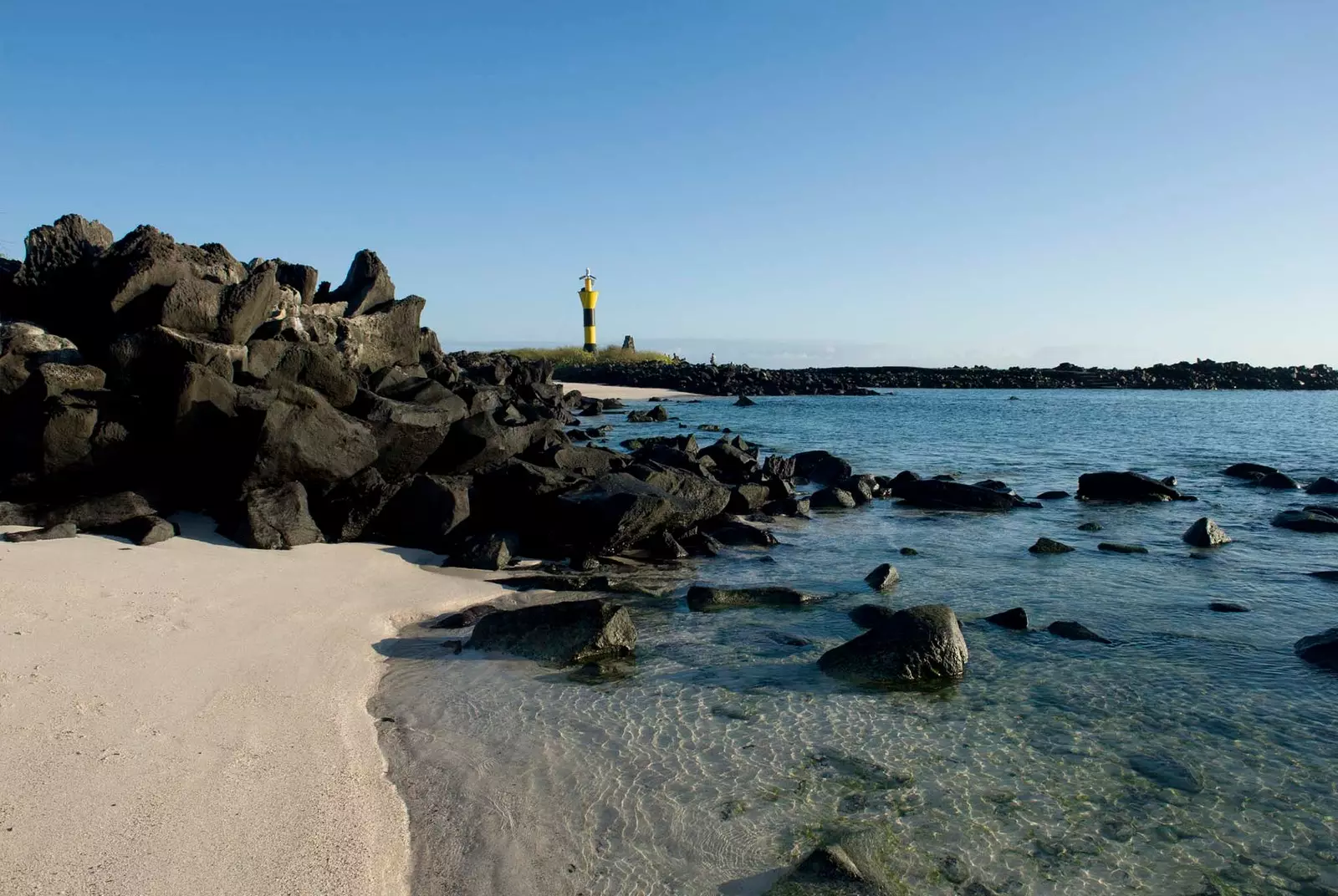
Volcanic rock in Punta Suarez
